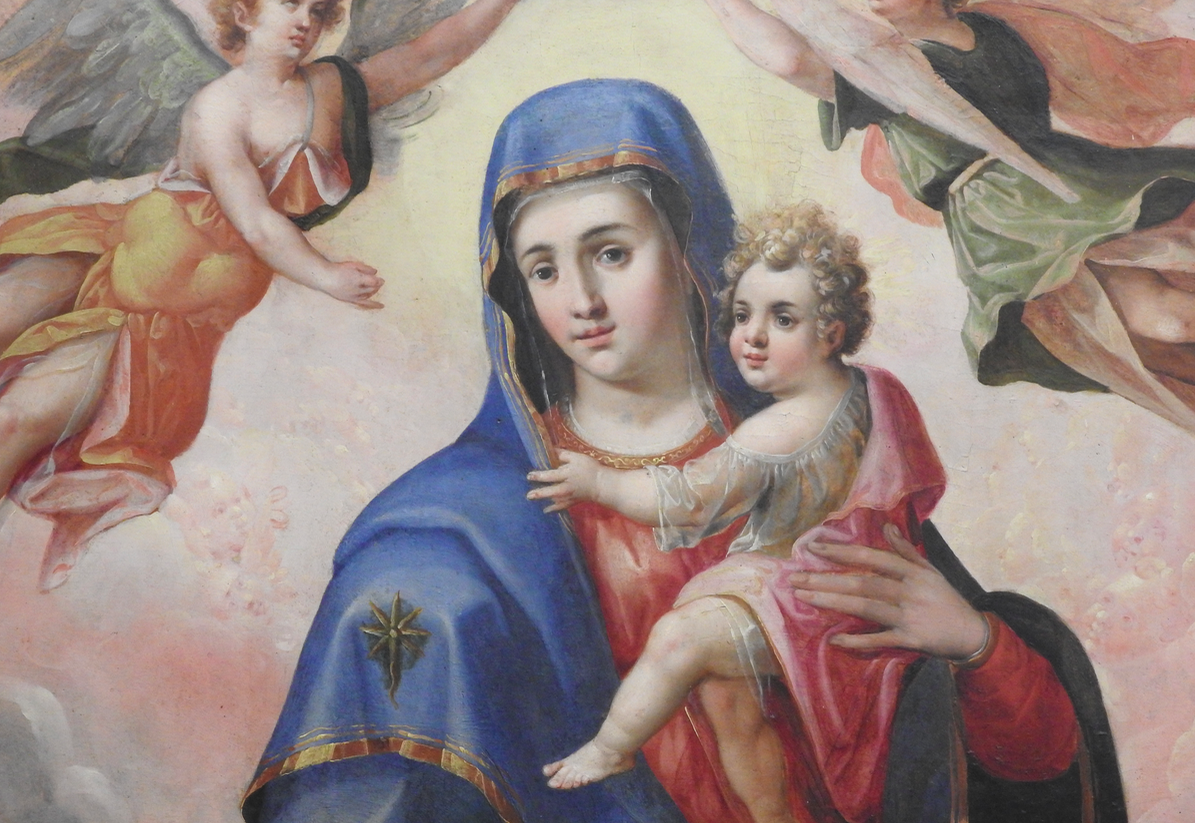
Our Lady and the Faith of our Mothers

No visit to Italy is complete without endless opportunities to enter and be awestruck in Italy’s innumerable churches and shrines. And any visitor from an English speaking country (where less embellished models predominate) is likely to be struck by the prominent presence of the Virgin Mary in these places of worship. Not only is she present; she appears as a representation of the spiritual world in many different guises and roles. Many places of worship are specifically dedicated to her in these different manifestations.
The names these places bear give a sense of the diverse roles she plays. She presides over the local “Chiesa Madra” (the Mother Cathedral) of many towns. She is (among others) the Madonna of the Carmine (patron of the Carmelite order), the Madonna of Divine Love, Our Lady of Confidence, St Mary of the People, Madonna of Tears, Madonna Addolorata (Our Lady of Sorrows), Holy Mary of Abundance and the Madonna del Soccorso (Our Lady of Assistance). These titles speak to a diversity of human and religious experience and by implication she is a powerful figure to whom the faithful turn for assistance. She is also the ancient Black Madonna, a figure about which much more can be said.
In a sense when we see her embodied in her statuesque or iconic forms we see the statement “She is God”. Of course this is not theologically true in Christian understanding. Careful distinctions are drawn between “Marian devotion” or hyperdulia (as she is not considered formally divine) and worship of the divine. Yet this specifically feminine form of religious devotion allows an approach to an ultimately genderless divine through a feminine, as opposed to the more usual masculine, metaphor. She is an intercessor or mediator between this world and the world beyond.
The title of this article is in part inspired by the title of the book “Faith of my Fathers” by the recently deceased Senator John McCain. As he explains the choice of his title it is a masculine mythic narrative set in the broader context of survival as a prisoner of war, it evokes male sacrifice “to something greater than ourselves”. However this article is not about John McCain although the title he chose serves as a point of departure. The title is indeed not original to John McCain for it is very similar to the title of an originally Catholic hymn: “Faith of our Fathers”.
Written in 1849 by Frederick William Faber, the words of the hymn, with the exception of a single reference to “Mary” are trenchantly masculine. This is how it begins:
Faith of our Fathers! living still
In spite of dungeon, fire, and sword:
Oh, how our hearts beat high with joy
Whene’er we hear that glorious word.
Such words of course evoke images of battle and conflict (although in reference to martyrs).
While visiting Italy, a relative kindly invited me to join him in attending a worship service. The experience was striking and beautiful, consisting of chanting in praise of Mary. Of course such experiences are virtually impossible to convey on paper. The parishioners, in the main led by women prayer leaders, were engaged in a “call and response” praise of the Virgin Mary. They were reciting the Rosary of the Madonna, the most prominent element of which is repeated invocations of the Ave Maria. Here are its words.
Ave, o Maria, piena di grazia,
il Signore è con te.
Tu sei benedetta fra le donne
e benedetto è il frutto del tuo seno, Gesù.
Santa Maria, Madre di Dio,
prega per noi peccatori,
adesso e nell’ora della nostra morte. AmenHail Mary, full of grace,
the Lord is with thee.
Blessed art thou amongst women,
and blessed is the fruit of thy womb, Jesus.
Holy Mary, Mother of God,
pray for us sinners,
now and at the hour of our death. Amen.
The first two verses are largely compiled from Gospel references to Mary. Here, of course, the devotion is strikingly framed through feminine human experience. It represents a pathway to the divine that has no need of masculine thoughts or framing. The Ave Maria is often rendered in music of which there are also many forms, including Schubert’s most well-known rendering.
My own faith is Baha’i. However it is not a belief that rejects other ways of understanding God, as the Baha’i teachings recognise that all people derive their inspiration from the same divine source. Often I have found that contemplating the diversity of ways that human beings relate to the divine in other religious traditions brings me to a deeper understanding of my own Faith. Sufficient to say that feminine forms flow through all the Abraham traditions although we sometimes fail to see it. Sophia, the Word of God, the Wisdom of God, makes her first appearance in the Jewish Scriptures of the Old Testament and continues to be re-expressed down to Baha’u’llah’s nineteenth century invocation of the Maid of Heaven as the divine female mediator of his own prophethood.
In Italy we are reminded that “he” is not the only way to understand the divine. We are reminded of prayers offered down the ages by the faithful, women and men, often to the figure called “Our Lady”.
Image
Madonna del Carmine, Workshop of Giovanni Angelo D’Amato, Pinoteca Provinciale di Salerno. Giovanni Angelo D’Amato, originally of Maiori near Salerno who worked in the sixteenth and early seventeenth centuries.
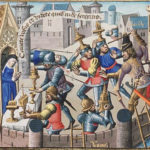
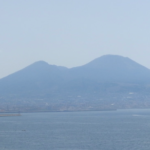
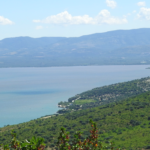

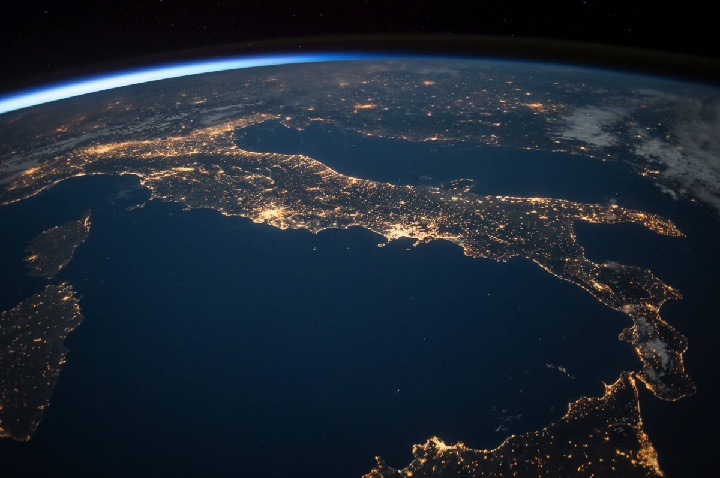


2 Comments
Michael Angelo Curtotti
Dear Father Carson, Thanks for being in touch. It is indeed a beautiful painting. The artist is Giovanni Angelo D’Amato. The painting called “Madonna del Carmine” is in a beautiful small gallery in Salerno called the Pinoteca Provinciale di Salerno, which I highly recommend to anyone visiting Salerno. regards Michael
Gary Carson
That beautiful cut and chopped painting of the Madonna…who is the artist? Whereis it located?
Thank you,
Fr.Gary Carson
Aguascalientes, Mexico